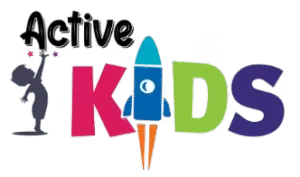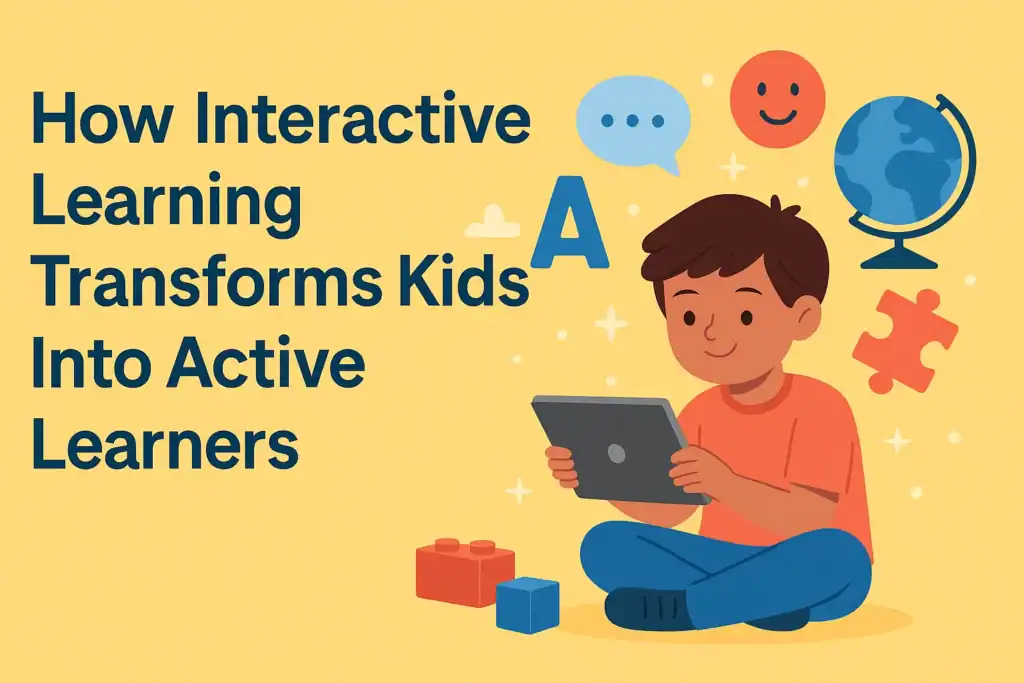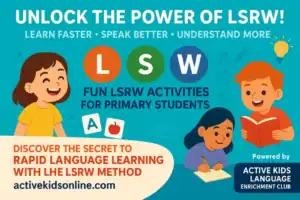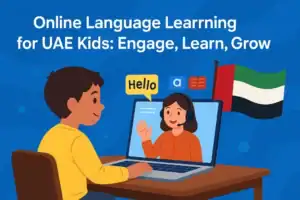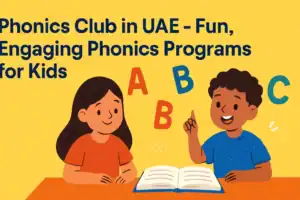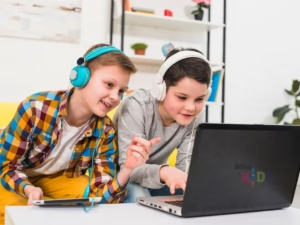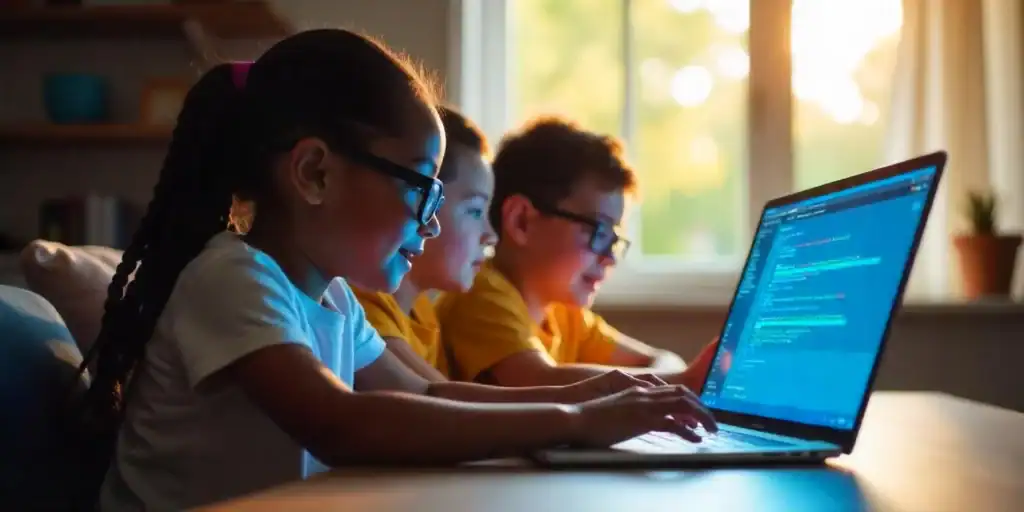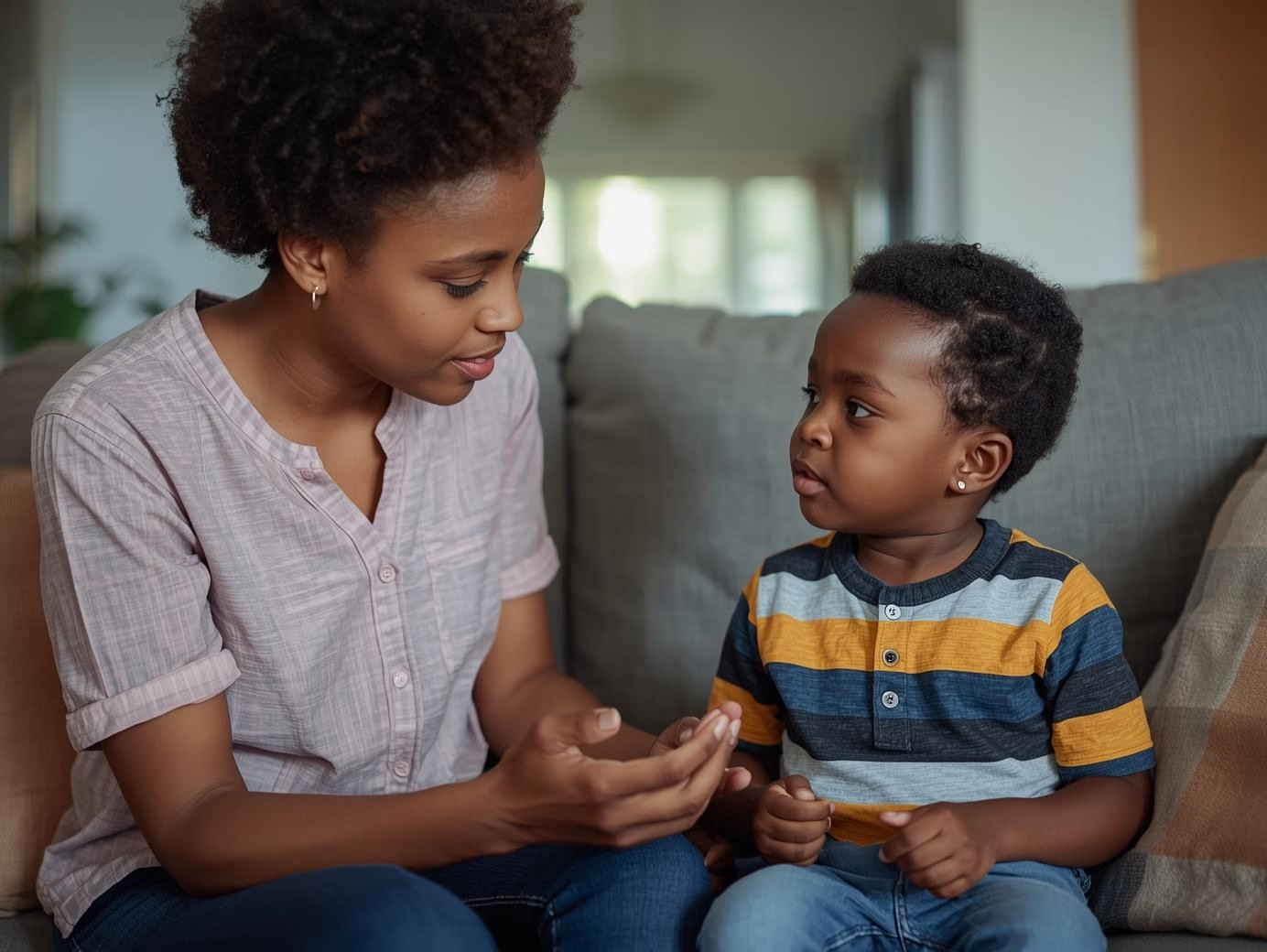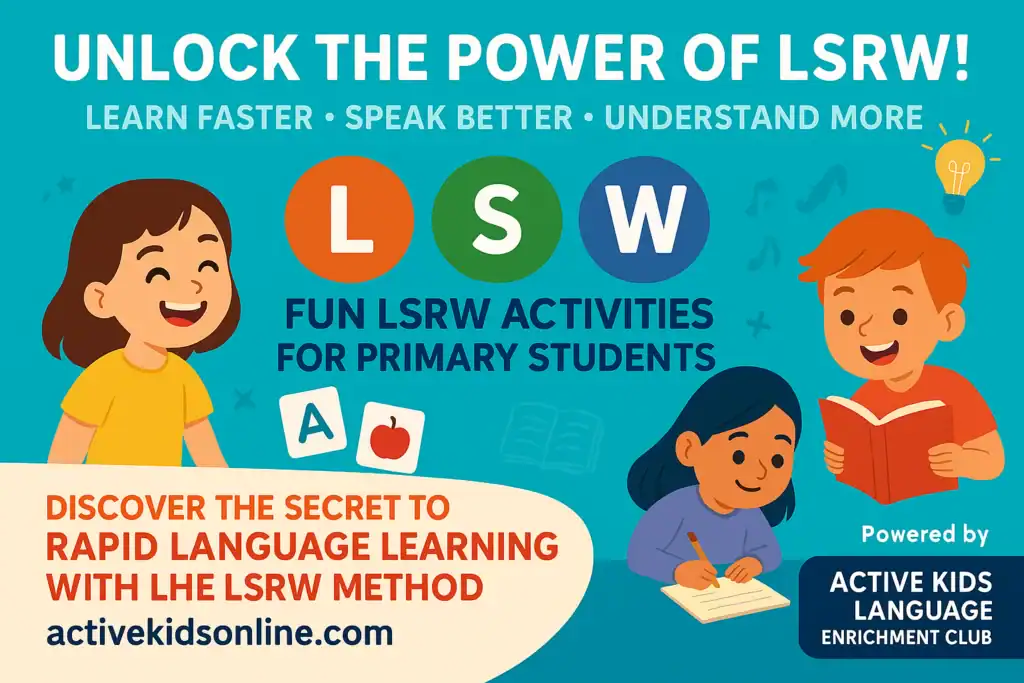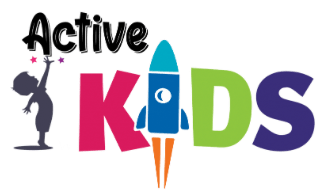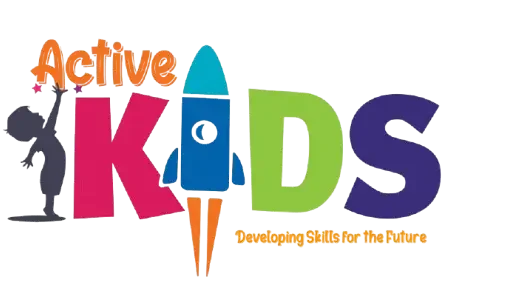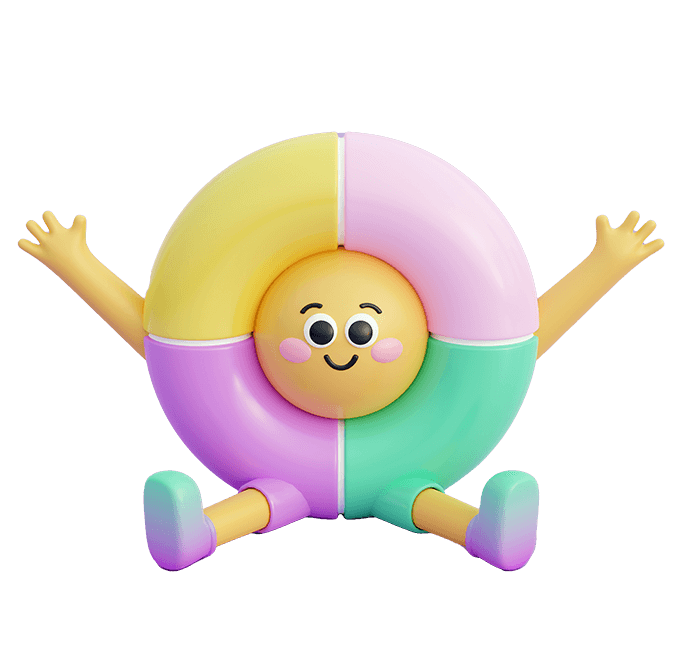Meta Description:
Unlock the power of interactive learning! Discover how hands-on, digital, and play-based strategies at home can turn your child into a confident, engaged learner. Join our Phonics Club today!
Introduction
Does your child lose interest during traditional lessons? You’re not alone. Many parents are now discovering that interactive learning is the key to rekindling a child’s natural love for discovery. Unlike passive methods, interactive learning puts your child in the driver’s seat—encouraging curiosity, problem-solving, and engagement through play, digital tools, and real-world exploration.
In this blog, we’ll show you how interactive learning transforms passive students into active, confident learners, and how you can implement it at home—starting today.
What Is Interactive Learning?
Interactive learning is an approach that actively involves kids in their education through hands-on activities, digital simulations, collaborative play, and two-way conversations. Unlike traditional models where a child simply listens or watches, interactive learning demands engagement—thinking, questioning, and creating.
It’s tailor-made for children, who naturally learn through play and participation. Whether through storytelling, building, coding, or solving puzzles, kids flourish when they’re not just absorbing but doing.
Why It Matters
Boosts Engagement and Retention
Children are more likely to remember what they’ve learned when they’re part of the process. Interactive tools—like digital games and tactile materials—activate multiple senses, leading to stronger memory recall and deeper understanding.
Develops Critical Thinking
Real-world challenges, digital simulations, and logic games teach kids to analyze, strategize, and solve problems independently—skills they’ll use for life.
Builds Confidence and Creativity
Interactive learning lets kids express themselves. Whether they’re inventing a game or solving a science riddle, children become self-assured as they realize their ideas and efforts matter.
Encourages Collaboration and Communication
When kids work together—online or offline—they learn valuable social skills, like listening, turn-taking, and expressing ideas clearly.
Real-Life Examples That Prove It Works
- Harvard research shows that peer-based interactive learning can be more effective than traditional lectures.
- In India, 300+ virtual labs are helping public school students grasp complex science concepts through simulation-based learning.
- In Bengaluru, a classroom-on-wheels initiative called Eco-Savaari utilizes hands-on eco-learning to spark young minds.
These examples all point to the same truth: Interactive learning isn’t just a trend—it’s a transformation.
Tools and Strategies to Try at Home
a. Digital Tools from Active Kids Online
At Active Kids Online, we believe in empowering parents with tools that drive real educational outcomes:
- Phonics Club: Our signature program uses interactive games, live sessions, and multisensory methods to teach phonics and foundational literacy in a way that sticks.
- Printable Resources & Worksheets: Designed for hands-on learning, our resources reinforce concepts through play and activity-based learning.
- Interactive Video Lessons: Engaging, age-appropriate video content keeps children actively involved and learning through movement, voice, and visuals.
- Parent Guides & Progress Tracking: Equip yourself with insights and tools to track your child’s growth while supporting their unique learning journey.
b. Interactive Platforms
- Kahoot!, Nearpod, Pear Deck: Turn lessons into exciting quizzes and competitions that encourage participation.
c. Play-Based Learning
- Set up DIY science experiments, storytelling corners, or family quiz nights.
- Use toys and materials already at home to build creative learning challenges.
Unlock the Power of Our Phonics Club
At Active Kids Online, we bring interactive learning to life through our Phonics Club. Designed specifically for young learners, it offers:
- Gamified phonics lessons that make reading fun.
- Multisensory tools to support different learning styles.
- Live feedback and progress tracking for parents.
Join our Phonics Club and turn your child into a confident, early reader with tools designed to convert curiosity into capability.
👉 Click here to enroll today and experience the difference!
Tips for Parents
- Match activities to your child’s interests and attention span.
- Combine screen-based tools with real-world, hands-on learning.
- Keep sessions short but consistent—15-30 minutes daily can be impactful.
- Ask open-ended questions that spark reflection and conversation.
- Celebrate every win—confidence builds momentum.
How to Know It’s Working
Your child may show:
- Increased curiosity and independence
- Better focus during tasks
- Improved academic performance
- More confidence when answering or explaining things
These are all signs your child is learning actively—not just passively memorizing.
Conclusion
Interactive learning isn’t a buzzword—it’s a powerful shift from passive to active, empowered learning. When kids engage through games, experiments, storytelling, and technology, they don’t just learn—they thrive.
As a parent, you can be the catalyst for this transformation. Start small. Stay consistent. And consider joining our Phonics Club, where interactive education meets proven results.
FAQs
What is interactive learning?
Interactive learning is a hands-on, engaging method that encourages kids to participate through games, storytelling, and activities.
Is interactive learning suitable for toddlers?
Yes! It can be adapted to all age groups using age-appropriate games and visuals.
Does it mean more screen time?
Not necessarily. Interactive learning also includes play, physical activities, and real-world exploration.
Can it replace traditional learning?
It’s best used as a supplement to enhance what your child is already learning, especially at home.
How can I try it affordably?
Use free apps, create DIY games, and check out budget-friendly programs like our Phonics Club.
